We’re always on the look out for new outdoor spaces to explore with the kids. As we all know (I hope we all know), Tallahassee has no shortage of these spaces. But sometimes we like to go to where we’re less likely to see, well, anyone at all. That’s why I’ve been liking Wildlife Management Areas lately.
These areas of maintained habitat don’t typically have amenities beyond a few trails, which I kind of like. WMAs and WEAs (Wildlife and Environmental Areas) protect waterways and give space for animals to roam. The state maintains six million acres of these lands, which recreationally are most used by hunters and anglers. For this reason, do check Florida’s hunting seasons before deciding to go.
There are different entrances and trails on either side of I-10; we chose the one to the north. There aren’t really trailheads or parking areas of any sort. We drove around the loop looking for gated off roads, which I guess are the trailheads here.
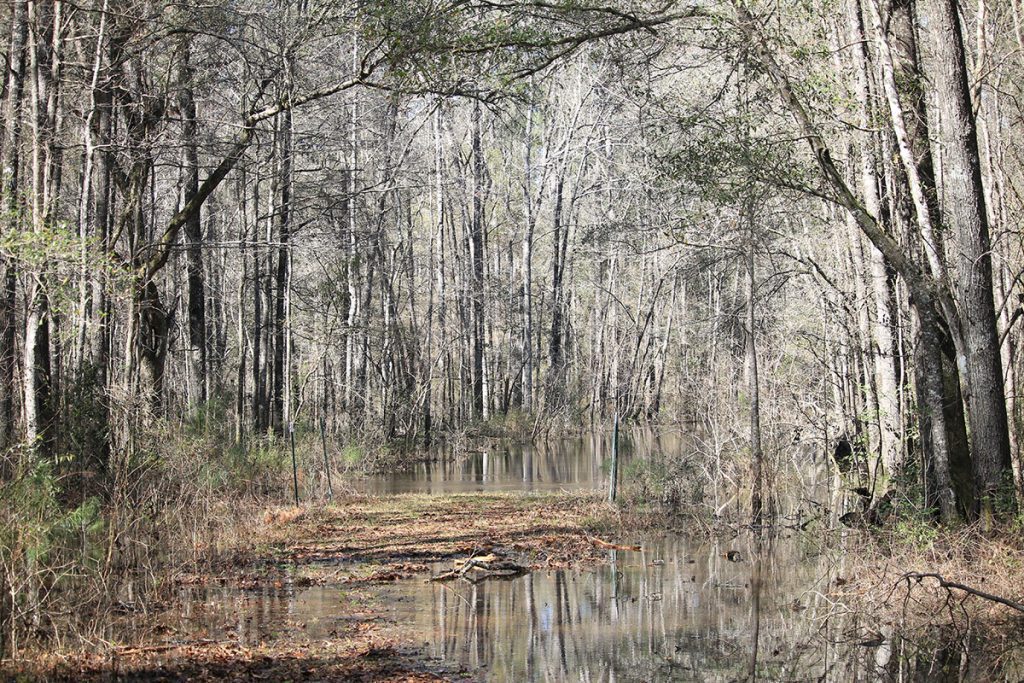
Here’s what one trail looked like when we came here a couple of months earlier. Lying along the Ochlockonee River, a lot of what we see is wet. hardwood forest. This was just after the winter rainy season. When we came in April, it was drier; plants were flowering or fruiting, and animals were active.
So Many Lizards at the Ochlockonee River WMA
My inner eight year old was delighted, as was my actual seven year old child. Last year when we hiked the Garden of Eden Trail, Xavi pointed out a few fence lizards. He has a gift for spotting them, even when they blend into their surroundings:
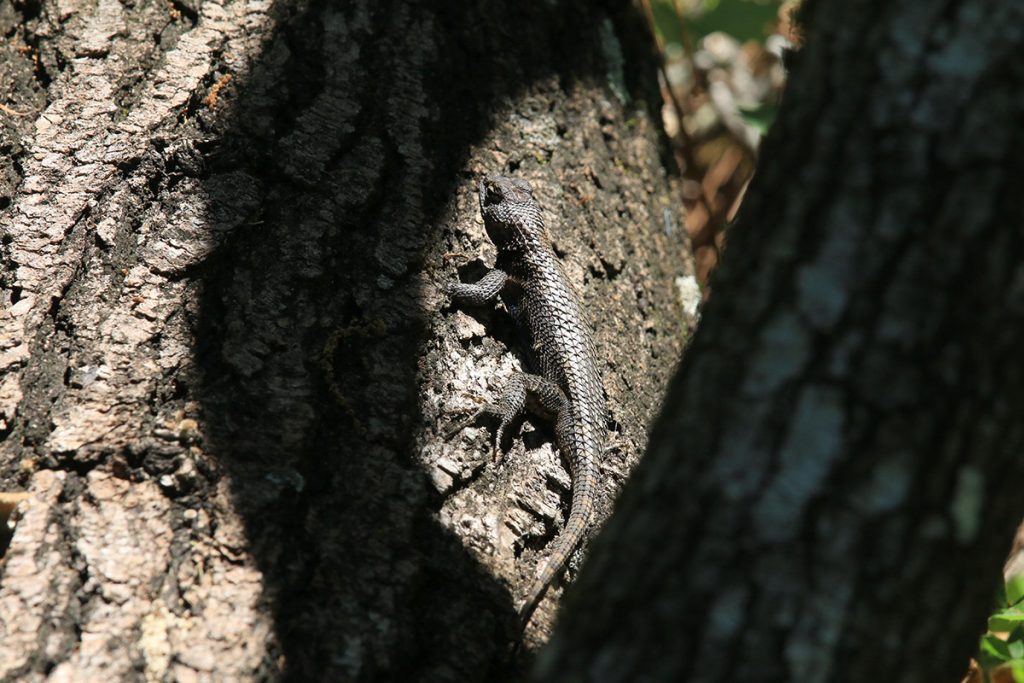
Down the trail some, we come upon an open sandy area full of gopher tortoise burrows. I spot what I think is a skink hiding:
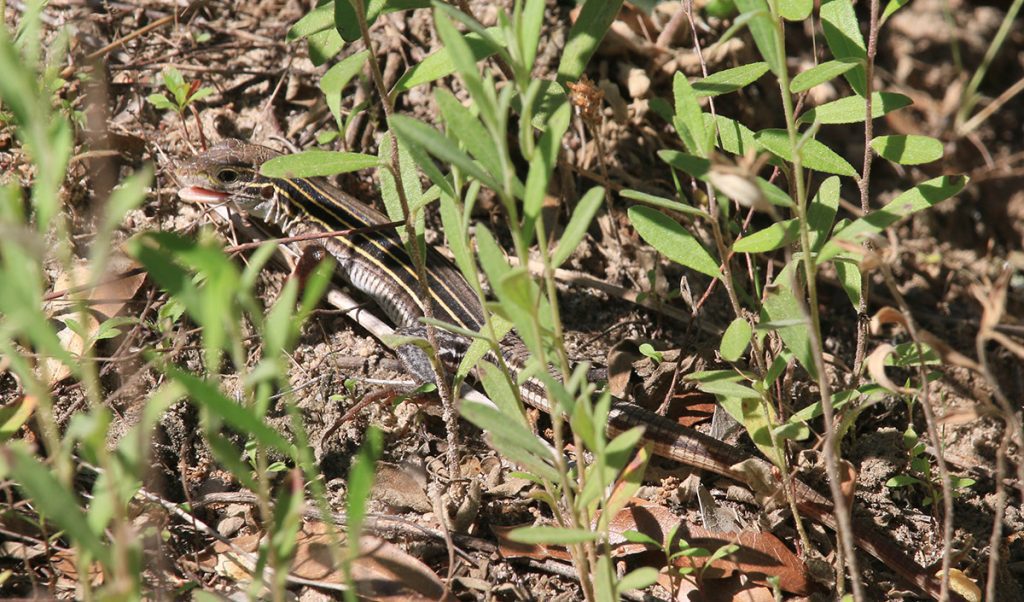
This is in fact the six-lined racerunner, and once it took off, it lived up to its name. As we walked around this little sandy area (looking for gopher tortoises), we startled several into running. One stopped directly in front of a tortoise burrow, deciding whether to seek shelter:
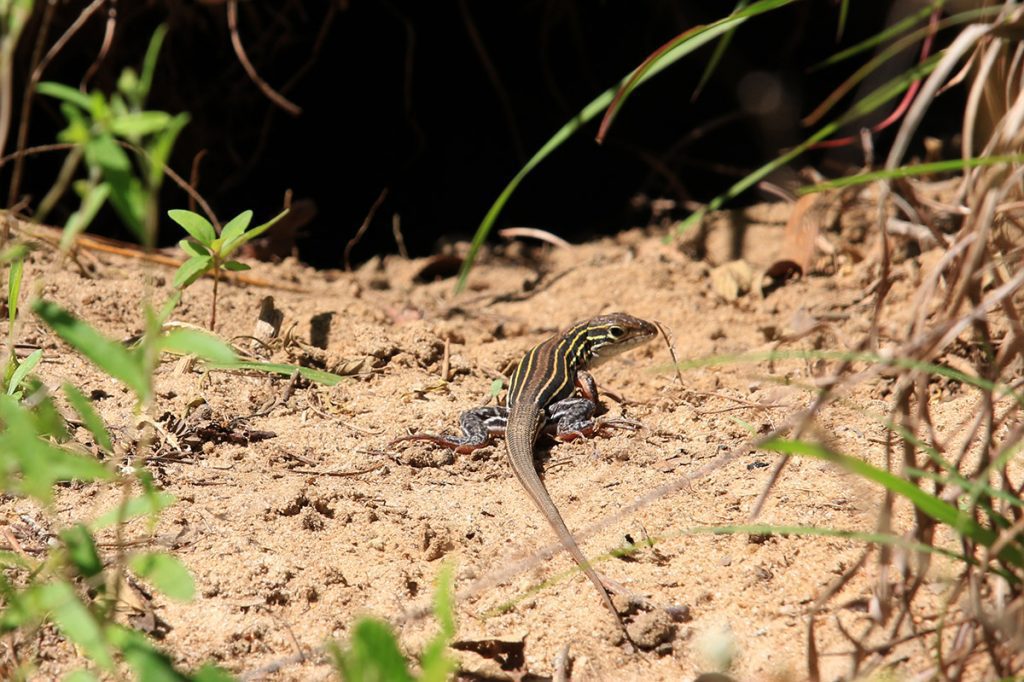
Gopher tortoise burrows are the place to be. Here’s where reptiles can spend cold winter days, where animals escape fire and shelter from predators. But I am not a predator.
Flowers in Bloom
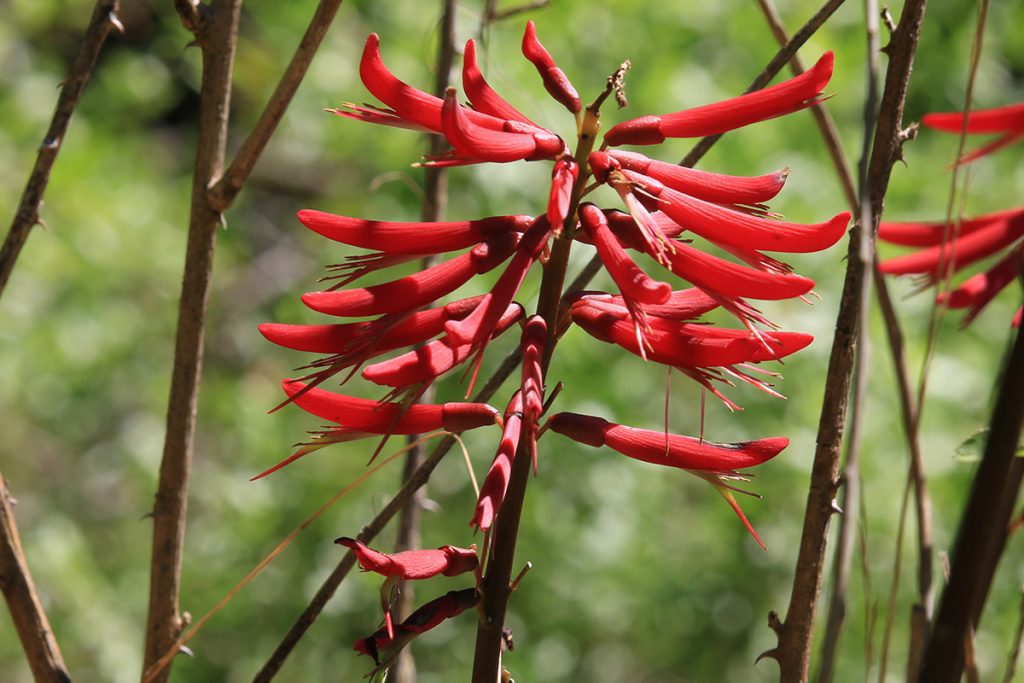
Next to the sandy area, coralbean was in bloom. So was one flower that was seasonally out of place:
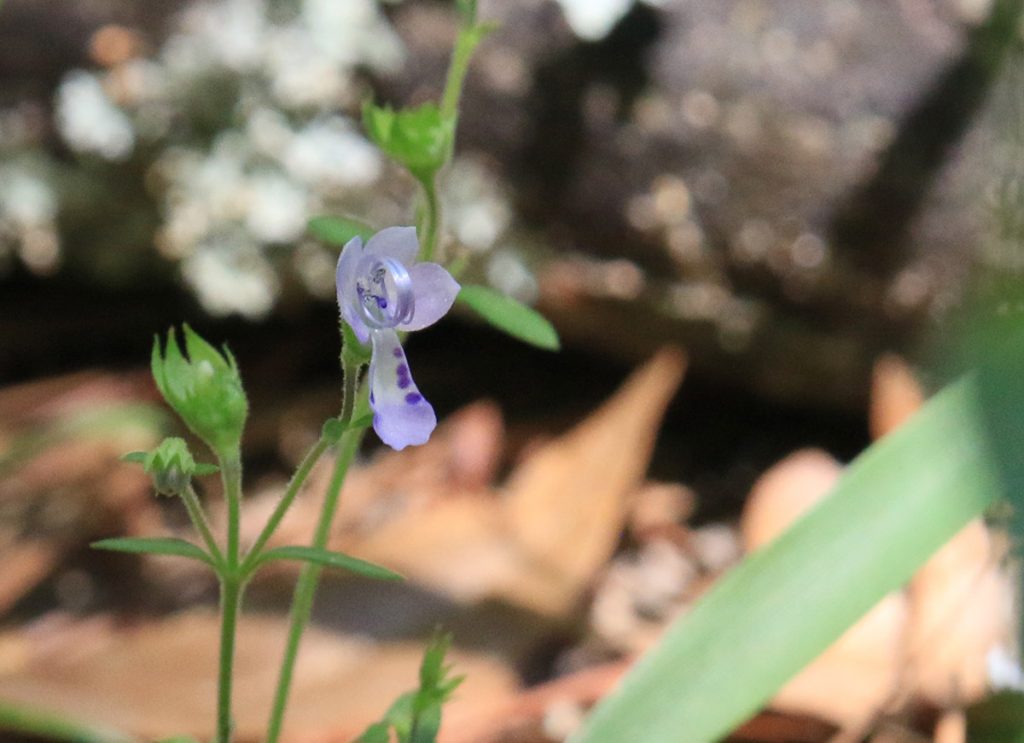
Here’s a winter blooming flower showing itself in April. Several buds look like they might continue blooming into May. Curious.
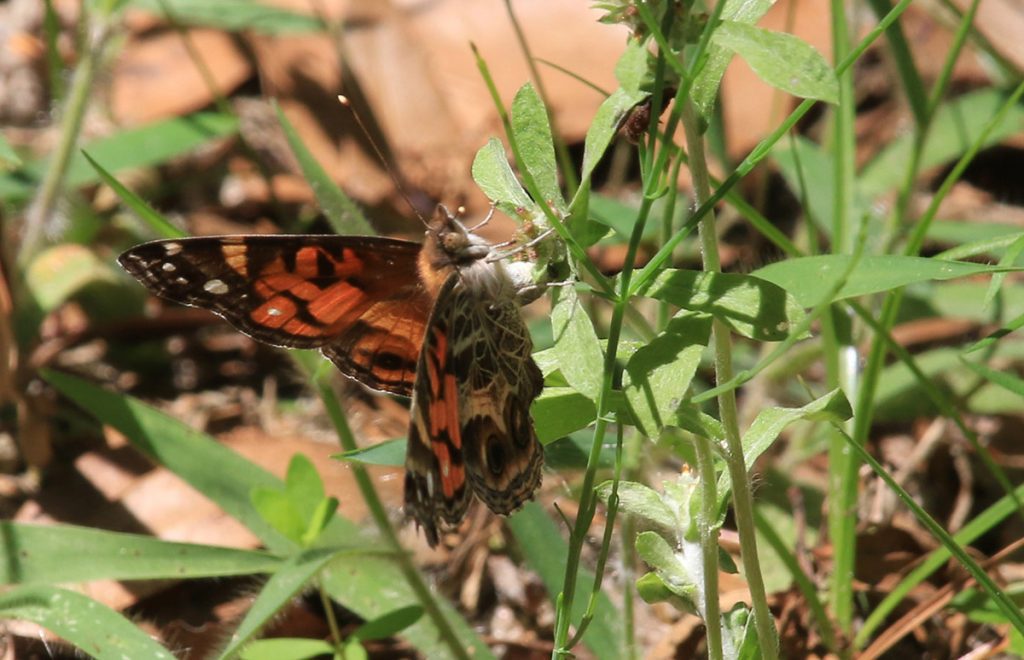
The trail hasn’t been mown in a while; weeds and small shrubs have grown on it. Right in the trail, we see an American lady butterfly curling its abdomen on its larval food- a cudweed.
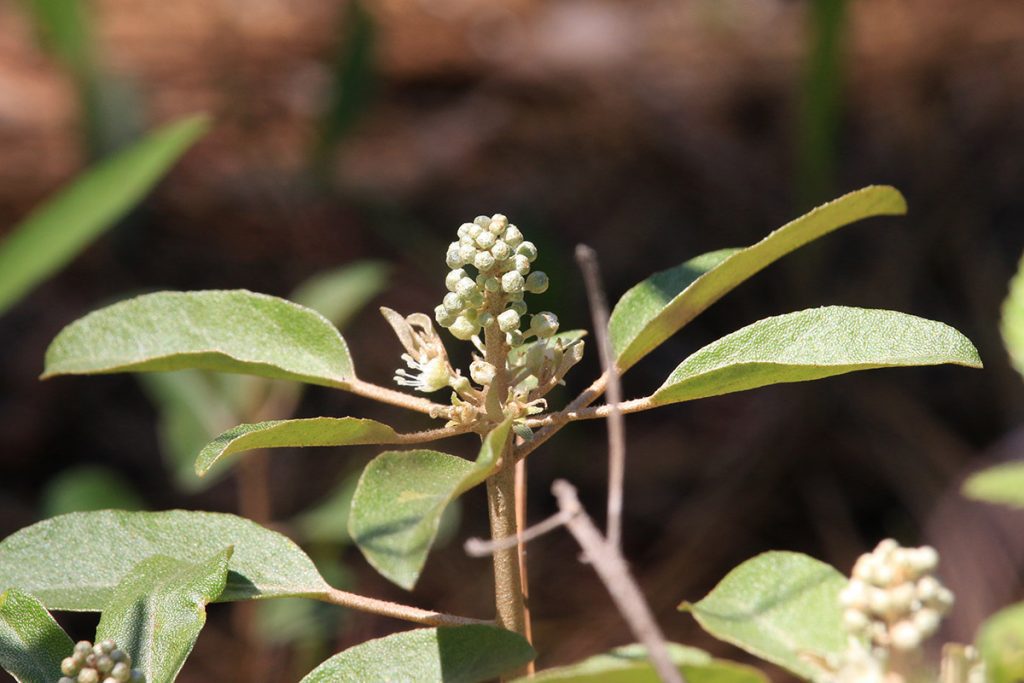
Down the trail aways is an upland pine area. The understory has been cleared by fire and a few things are starting to bloom. This is silver croton, a common shrub in this kind of habitat.
Trail Snacks
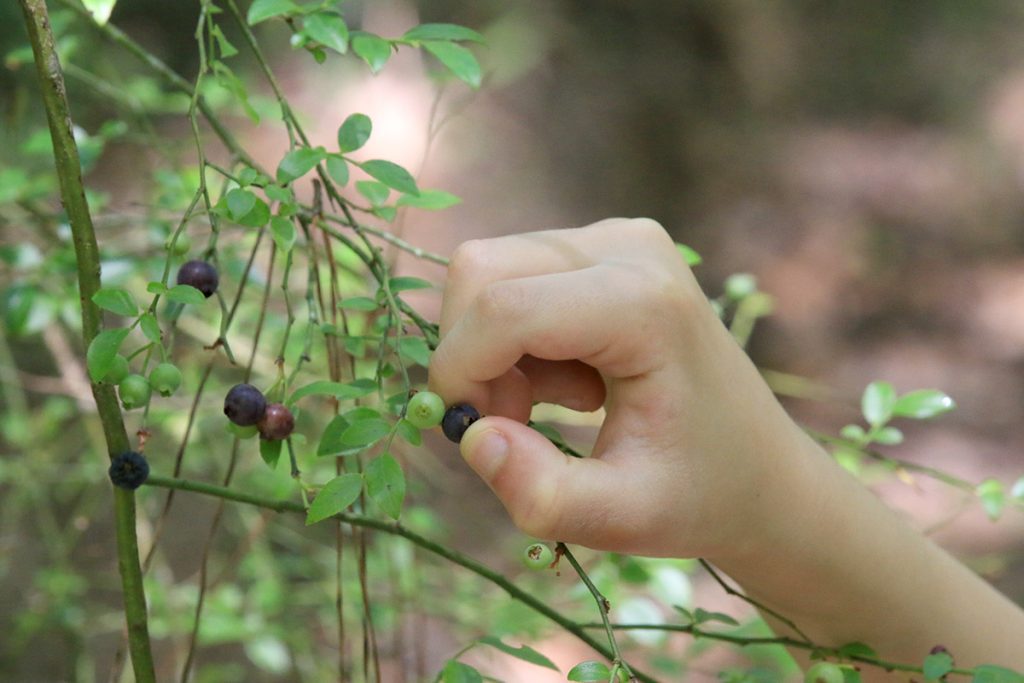
We saw blueberries in spots along the trail. Or maybe these are sparkleberries, which, like blueberries and cranberries, is in the Vaccinium genus.
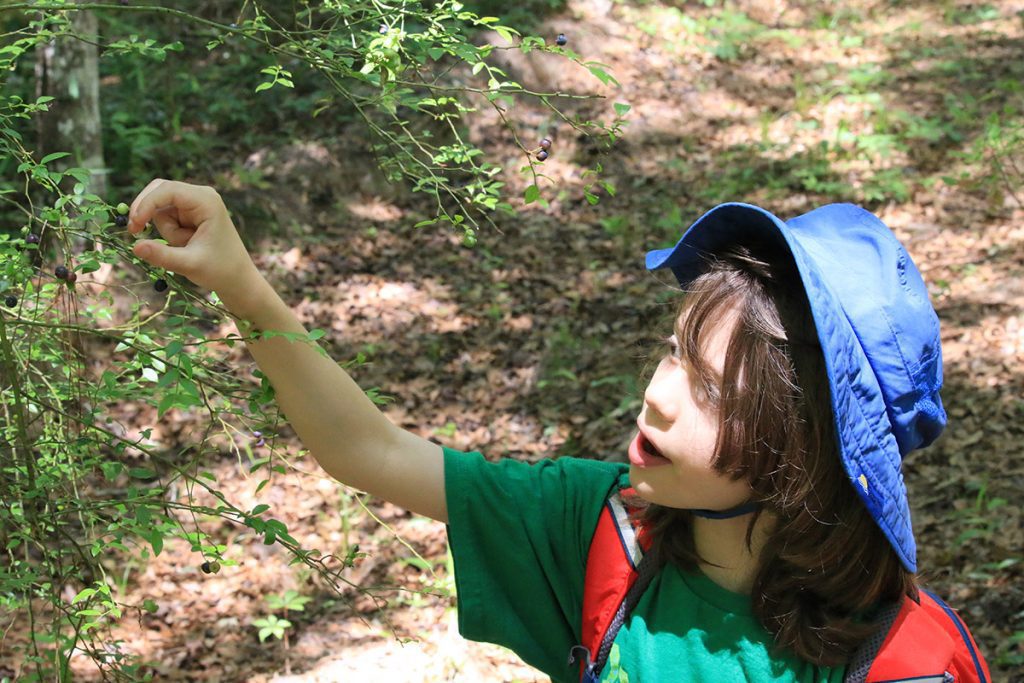
Those weren’t the only snacks along the trail:
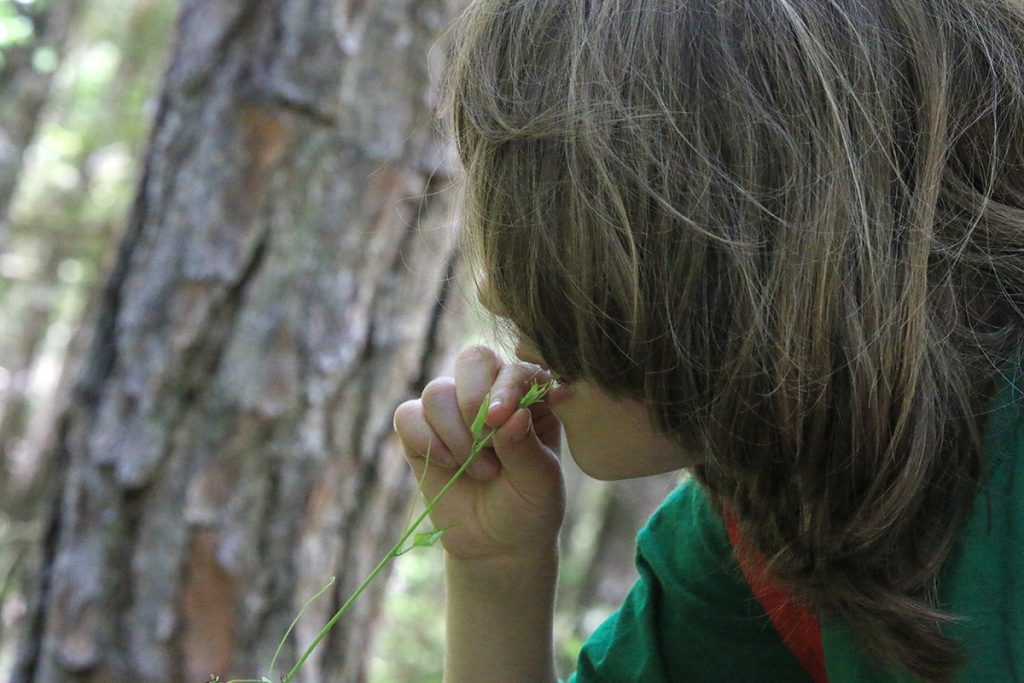
The boys will eat any smilax vine tips not already eaten by deer.
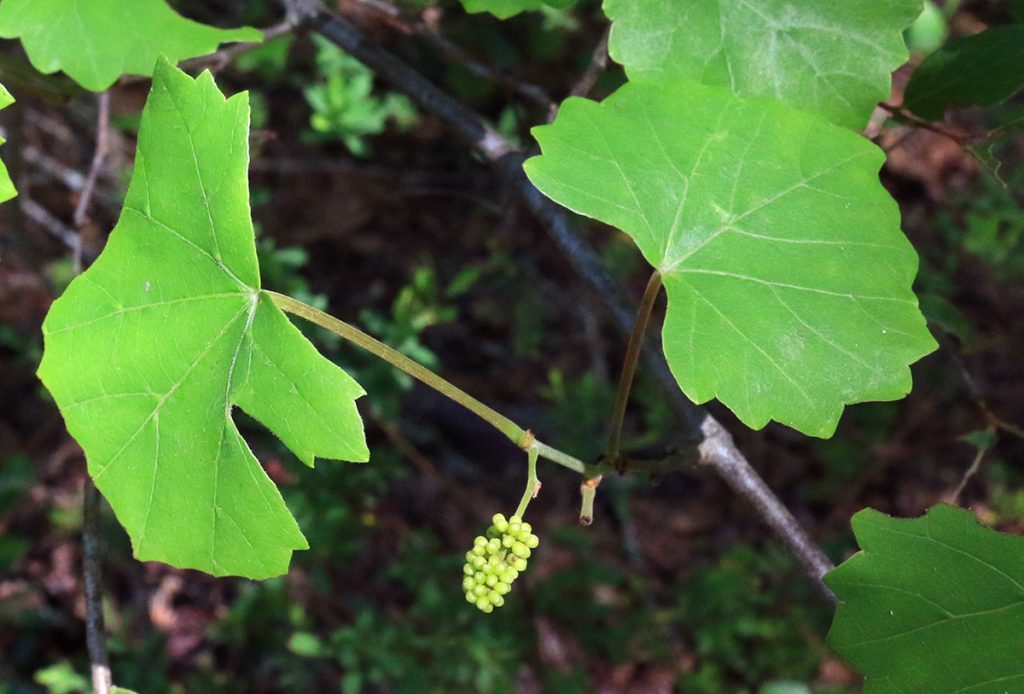
If we’re up to a return visit in the hotter months, these muscadines will be ready for us.
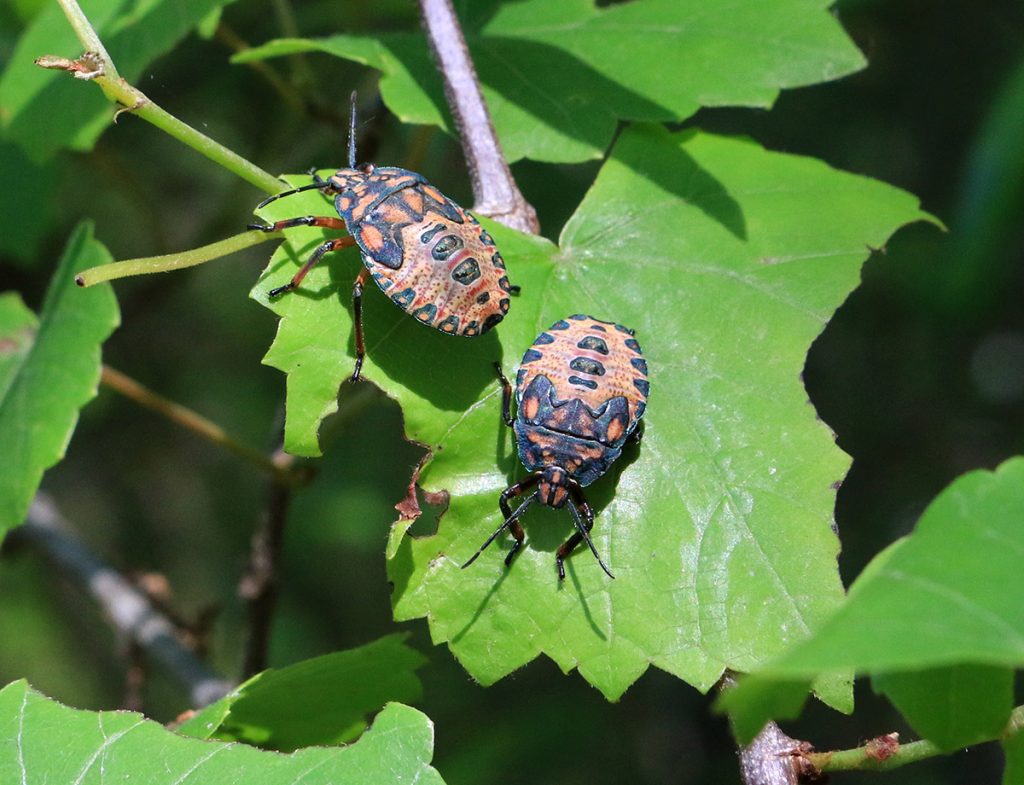
I saw these stinkbugs on a grape leaf that had been nibbled. Stinkbugs don’t nibble leaves, and especially not these. iNaturalist’s best recommendation, which was confirmed, was that these are predatory stinkbugs. They eat the things that eat the leaves.
One last lizard before we go, and a prickly pear
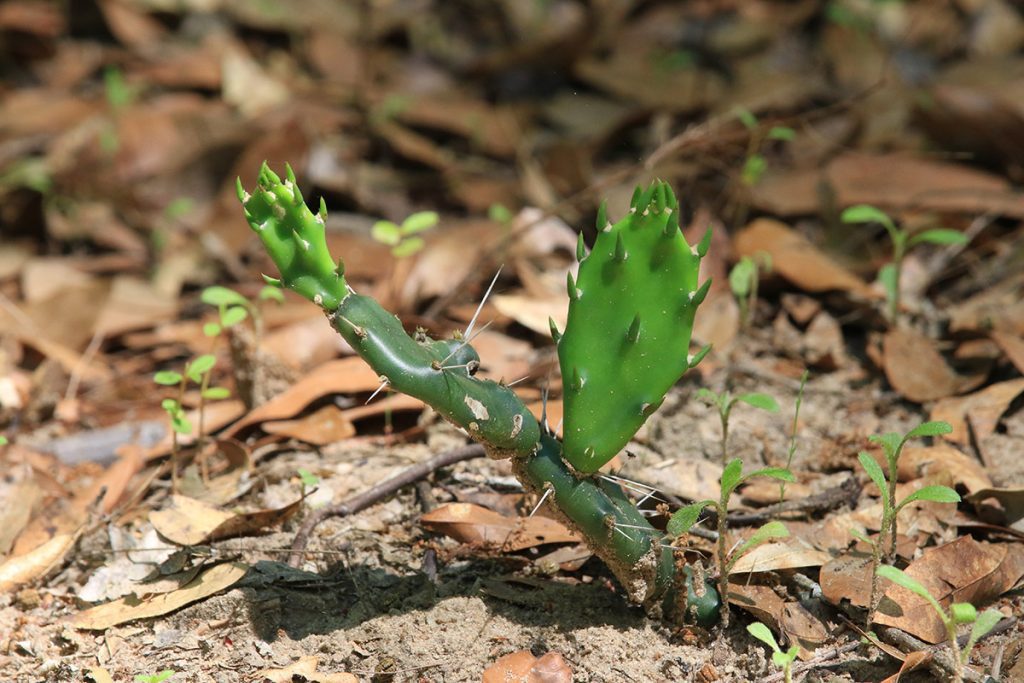
Xavi really wanted a photo of this prickly pear. Now I share it with you.
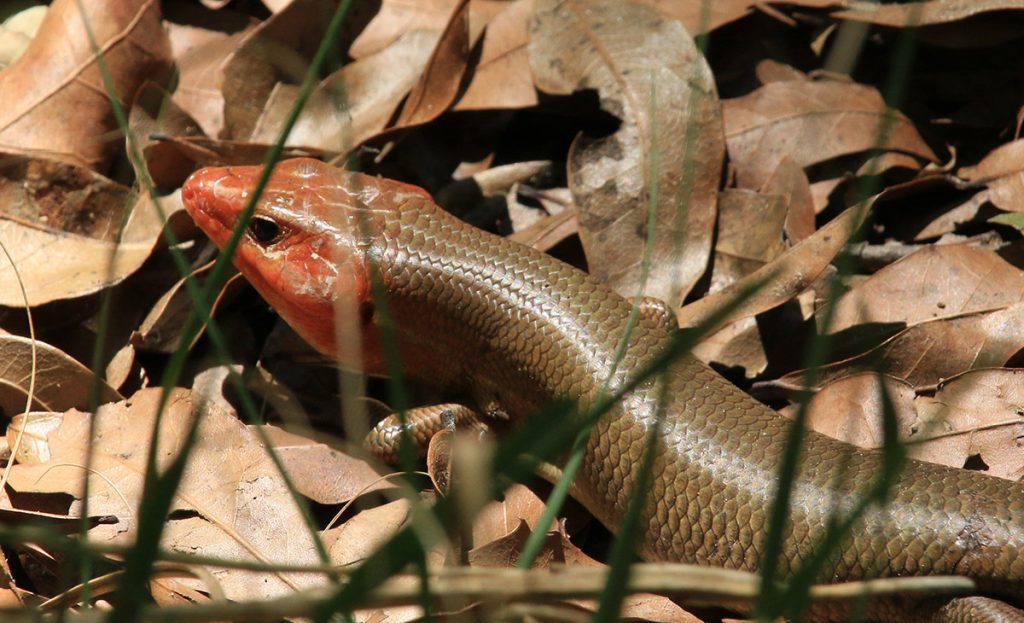
This guy was right by the car when we got back. Unlike the broadhead skinks in our yard, he didn’t bother to move. The bright red head means this male is ready to breed. It’s that time of year. Over the summer, we will once again see baby skinks in our yard.

